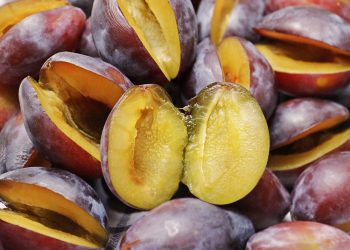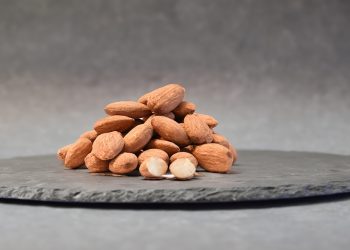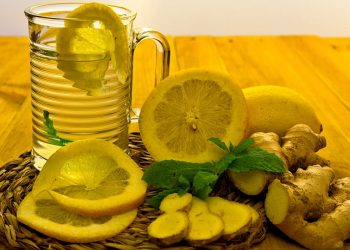Feeling sluggish? Searching for a natural way to rev up your energy levels? Low-glycemic foods that boost energy naturally are your golden ticket. These foods not only keep your blood sugar stable but also provide a sustained release of energy throughout your day. Imagine saying goodbye to those afternoon slumps and hello to vibrant energy.
In this article, we’ll dive deep into ten remarkable low-glycemic foods that can transform your health and vitality. You deserve to feel energized and alive, so let’s get started!
Contents
What Are Low-Glycemic Foods?
Low-glycemic foods have a low glycemic index (GI), a scale that ranks carbohydrates based on how quickly they raise blood sugar levels. Foods with a low GI release glucose slowly and steadily, helping you maintain energy without the crash that high-GI foods bring. By choosing low-glycemic options, you can support your body’s needs and feel your best every day.
Why Choosing Low-Glycemic Foods Matters
Incorporating low-glycemic foods into your diet isn’t just about energy; it’s about overall well-being. Here’s why it matters:
- Stable Energy Levels: No more rollercoaster rides of energy; low-GI foods provide a steady supply.
- Weight Management: They keep you feeling full longer, which can help curb cravings and maintain a healthy weight.
- Reduced Risk of Chronic Diseases: Low-GI diets are associated with a lower risk of diabetes and cardiovascular issues.
So, are you ready to discover these powerhouse foods? Let’s jump into the top ten low-glycemic foods that will boost your energy naturally.
1. Quinoa
Quinoa isn’t just a trendy grain; it’s a protein-packed powerhouse. With a low glycemic index of 53, this pseudo-grain is a fantastic source of complex carbohydrates. It’s loaded with fiber, which helps slow down digestion and keeps you feeling fuller for longer.
Benefits:
- Complete protein source, ideal for vegetarians.
- Rich in magnesium, which helps boost energy metabolism.
How to Enjoy: Toss it in salads, use it as a base for bowls, or even mix it into your morning oatmeal.
2. Sweet Potatoes
Sweet potatoes are not only delicious but also incredibly nutritious. With a glycemic index of about 44, they offer a sweet flavor without the sugar spike. Packed with vitamins A and C, they also provide powerful antioxidants.
Benefits:
- High in fiber, aiding digestion and promoting satiety.
- Natural source of beta-carotene, which supports eye health.
How to Enjoy: Roast them, mash them, or bake them as fries for a tasty side dish.
3. Lentils
Lentils are a fantastic source of plant-based protein and fiber, boasting a low GI of around 21. These little legumes are not only nourishing but also incredibly versatile.
Benefits:
- Help stabilize blood sugar levels.
- Rich in iron, supporting energy production.
How to Enjoy: Add them to soups, stews, or salads for an energy-boosting punch.
4. Chickpeas
Chickpeas, or garbanzo beans, are a fantastic low-GI food (GI of 28) that can elevate your meals. They’re rich in protein and fiber, making them a perfect choice for sustained energy.
Benefits:
- Help regulate blood sugar and promote a feeling of fullness.
- Loaded with vitamins and minerals.
How to Enjoy: Use them in salads, hummus, or roasted as a crunchy snack.
5. Berries
Berries are nature’s candy, offering sweetness without the sugar crash. With a glycemic index ranging from 25 to 40, they are excellent for an energy boost.
Benefits:
- High in antioxidants, which fight inflammation.
- Low in calories but high in fiber, making them ideal for weight management.
How to Enjoy: Add them to smoothies, oatmeal, or enjoy them fresh as a snack.
6. Nuts and Seeds
Nuts and seeds are nutrient-dense, low-GI foods that provide healthy fats, protein, and fiber. Their GI varies, but most fall below 20.
Benefits:
- Promote heart health and keep you feeling full.
- Rich in omega-3 fatty acids, which support brain function.
How to Enjoy: Snack on them raw, toss them in salads, or blend them into smoothies.
7. Greek Yogurt
Greek yogurt is a creamy delight with a low glycemic index of around 11. Packed with protein and probiotics, it’s a fantastic option for breakfast or a snack.
Benefits:
- Supports gut health, enhancing digestion and energy levels.
- Helps keep you satisfied longer.
How to Enjoy: Top it with berries and nuts for a hearty snack or breakfast.
8. Oats
Oats are a breakfast staple that shouldn’t be overlooked. With a glycemic index of about 55, they provide a slow release of energy, perfect for starting your day.
Benefits:
- High in soluble fiber, which helps lower cholesterol.
- Keeps you full and energized until lunchtime.
How to Enjoy: Cook them as oatmeal, add them to smoothies, or use them in baked goods.
9. Dark Chocolate
Yes, you read that right! Dark chocolate (70% cocoa or higher) has a low glycemic index of around 22. It’s a delicious treat that can actually boost your energy levels.
Benefits:
- Contains antioxidants that promote heart health.
- Can enhance mood and cognitive function.
How to Enjoy: Enjoy a small piece as a treat or melt it into desserts.
10. Green Leafy Vegetables
Spinach, kale, and other leafy greens may not seem like energy boosters, but they are packed with nutrients and have a very low glycemic index. They provide vitamins, minerals, and antioxidants that support overall health.
Benefits:
- High in iron, which is essential for energy production.
- Help fight fatigue and enhance overall vitality.
How to Enjoy: Add them to salads, smoothies, or sauté them as a side dish.
Bottom Line
Incorporating low-glycemic foods that boost energy naturally can revolutionize how you feel throughout the day. From quinoa to dark chocolate, these foods support stable energy levels, weight management, and overall health. It’s time to nourish your body with the goodness it deserves.
Don’t wait for energy to come knocking at your door—start making these delicious choices today! Your body will thank you.
FAQs
What is the glycemic index?
The glycemic index measures how quickly a food raises blood sugar levels. Low-GI foods are digested slowly, providing a steady energy release.
How can I incorporate low-GI foods into my diet?
Start by swapping high-GI foods for their low-GI counterparts. For example, choose quinoa over white rice or sweet potatoes over white potatoes.
Are low-GI foods suitable for everyone?
While low-GI foods are generally beneficial, it’s essential to consult with a healthcare provider for personalized advice, especially if you have specific health conditions.
Take your energy to new heights with these foods, and remember—your health journey is yours to own. Here’s to vibrant, robust living!
Get Your FREE Natural Health Guide!
Subscribe now and receive our exclusive ebook packed with natural health tips, practical wellness advice, and easy lifestyle changes — delivered straight to your inbox.














